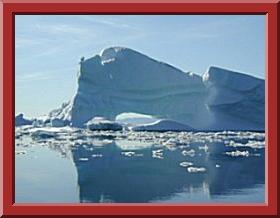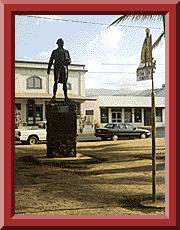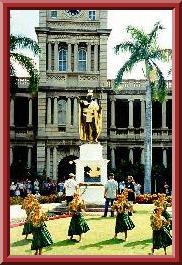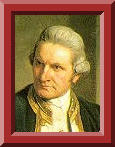|
|
Midi Playing:
Ten thousand Angels cried

A Yorkshireman's tribute to:
Captain James Cook R.N.

©Photograph by kind permission of Klaus Poulson
Foiled by ice, James Cook abandoned his search and returned to Hawaii to prepare for another attempt at the Northwest Passage the next season.
Soon after they departed, a storm damaged the foremast of the Resolution and forced a return to Kealakekua Bay for repairs. Unfortunately, they had previously overstayed their welcome and relations became tense. The theft of a ship's cutter led Captain Cook to put ashore to demand the return of the boat. A fight broke out and James Cook was killed.
Although his men made another attempt at the Northwest Passage, they were unsuccessful. The expedition did identify the possibilities of trade with the coastal American natives for otter seal furs, which could then be bartered for Chinese goods that were highly prized in England.

Located on the roadside in the rural town of Waimea in Hofgaard Park, the site where Captain James Cook first landed in Hawaii in 1778. Cook, and the crews of the HMS Resolution and HMS Discovery, sighted the islands of O'ahu, Kaua'i and Ni'ihau on January 18 and named his discovery the Sandwich Islands in honour of his patron, the Earl of Sandwich. They were the first westeners to discover the Hawaiian Islands.

Statue of King Kamehameha the Great, Honolulu, Hawaii
©Photograph with the kind permission of Daniel Davila
Captain James Cook charted many of the South Pacific islands with the incredible accuracy of 3 miles, and HM Bark Endeavour was the first ship to determine longitude accurately at sea using recently published nautical tables and lunar sights.

Honolulu
sunset
©Photograph with the kind
permission of Daniel
Davila
Cook did more than any other man of his time to promote the health of his crew, and through his example, seamen in every vessel afloat survived the dreaded scurvy. In an age when ships of other nations would lose hundred to scurvy, Cook reported deaths in the single figure, and most of those were due to conditions existing before the voyages began.
Captain Cook ensured his men washed daily, to air out their hammocks, and to eat as much fresh food as possible.
HM Bark Endeavour was the first ship to make a long voyage without losing a man to scurvy.
The original Endeavour was eventually sold to the French and renamed La Liberte. In 1794 she ran aground near Newport, Rhode Island, USA.

Captain James Cook
1755. Cook joins Royal Navy
1759. Commands first ship Mercury, sailing to Canada and up the St. Lawrence River.
1764. Leads a number of surveying missions on the coast of Labrador, Newfoundland, and Nova Scotia.
1768. Cooks interests in astronomy leads to him publishing some of his findings in the Transactions of the Royal Society. The Society called on him to lead a voyage to Tahiti to establish an astronomical obsevatory, since the southern hemisphere would allow a better view of the planet Venus.
1770. Arrives in the terra australis incognita, the "unknown land in the south," now known as Australia. There he continued his scientific research. The wealth of plant species his team discovered led him to name his point of landing Botany Bay.
1771. Returning to England after another successful expedition to the South Pacific, he was elected to the Royal Society.
1776. Cook set off on his last voyage, on which he discovered Christmas Island and the Hawaiian Islands (which he called the Sandwich Islands). From Hawaii he sailed to Vancouver, through the Bering Strait, and into the Arctic Ocean in search of a Northern Passage, but was unsuccessful.
1779. Cook returned to Hawaii, where he was killed by the natives of the islands on the 14th day of February, 1779; in the 51st year of his age.

Nathaniel Cook was lost at sea whilst sailing with the Thunderer Man of War during a hurricane, in October 1780 aged 16 years.
Hugh Cook, of Christ's College, Cambridge, died on the 21st of December, 1793 aged 17 years.
James Cook, Commander in the Royal Navy, who lost his life on the 25th January 1794 sailing from Pool aboard the Spitfire Sloop of War, which he commanded. He was 31 years old.
Elizabeth Cook, died April 9th 1771, aged 4 years.
Joseph Cook, who died September 13th 1768, aged 4 months.
George Cook, who died October 1st 1772, aged 4 months.
All children of the first mentioned Captain James Cook by Elizabeth Cook, who survived her husband by 56 years, departed from this life on 13th May 1835 at her residence in Clapham, Surrey, England. She was 94 years old.
Her remains are deposited with those of her sons James and Hugh, in the middle aisle of Great St-Andrews church, Cambridge, England.
![]()
![]()

Free
JavaScripts provided
by
The
JavaScript Source
Map of Captain Cooks Voyages 1768-1779
Excerpts from Cook's journal, Queensland coastline (1770)
Henry Roberts Log of Captain Cook's death
Don Burluraux's Whitby Photographs
Joseph J Schonbok's Captain James Cook
Alan Levy's Antarctic Peninsula
King Kamehameha the Great of Hawaii
Set sail for the Southern Ocean
Welcome to Milamba's Australia

View
My Guestbook
Sign
My Guestbook
ACKNOWLEDGEMENTS
I would like to thank all who gave me their kind permission to use their photographs on this website, consequently this has enabled me to show you the many places that Captain Cook and his crew would have seen on their voyages so many years ago
My sincere gratitude goes to:
Don Burluraux; Daphne Salt; Ayton Old Scholars Association; Daniel Davila; Alan Levy; Kate and Hamish Laird; Jim McLaren, Jim Moody; Klaus Poulson. Shirley McLeod.
![]()
Malcolm
mal@jupiter98.freeserve.co.uk
Date Last Modified: 27/01/03
Thank you for visiting my website,
take care.
Keep your face to the sunshine, and the shadows will fall behind you.